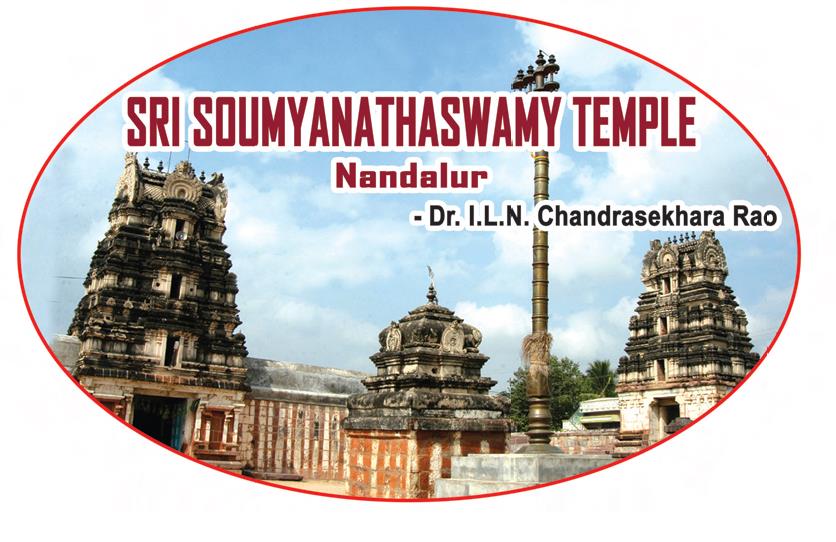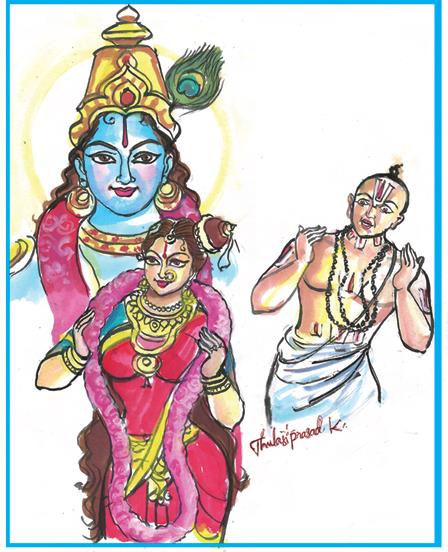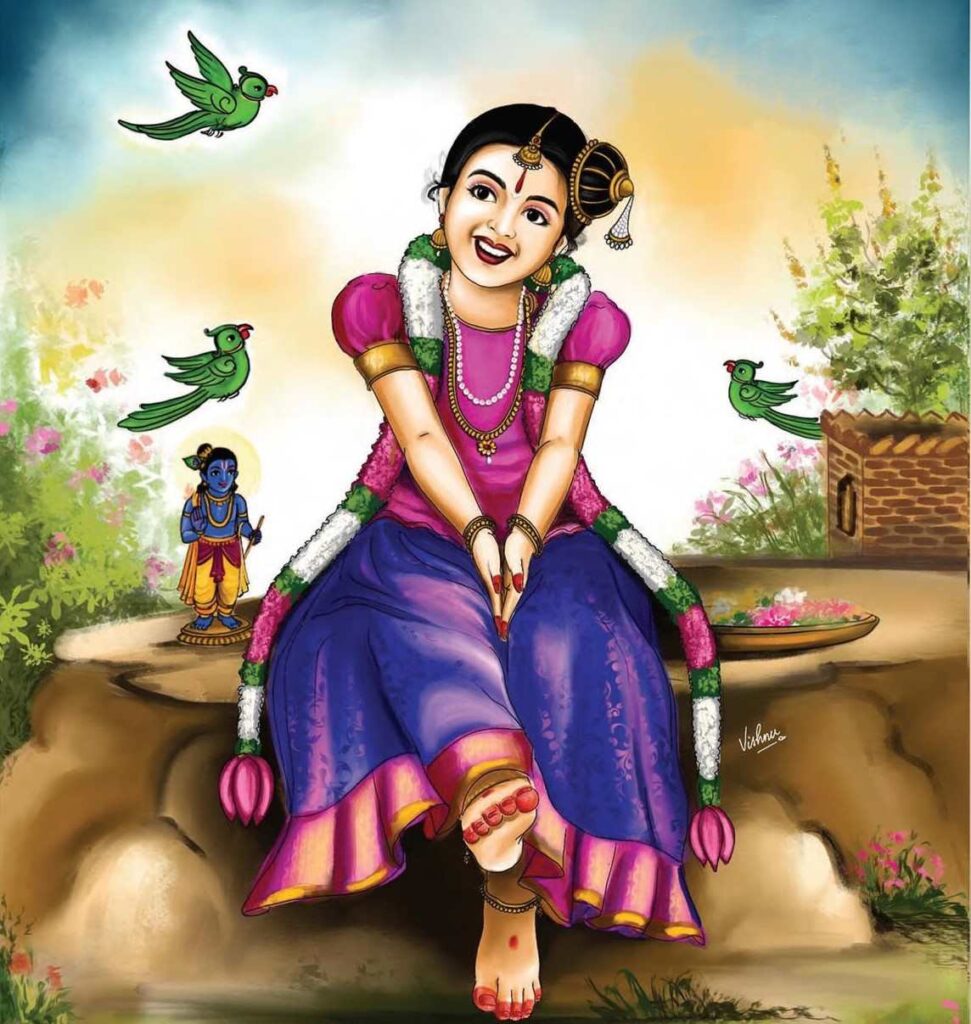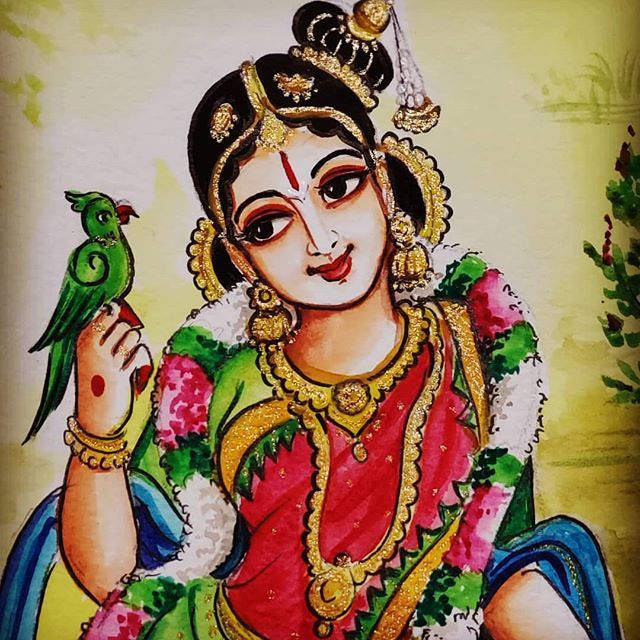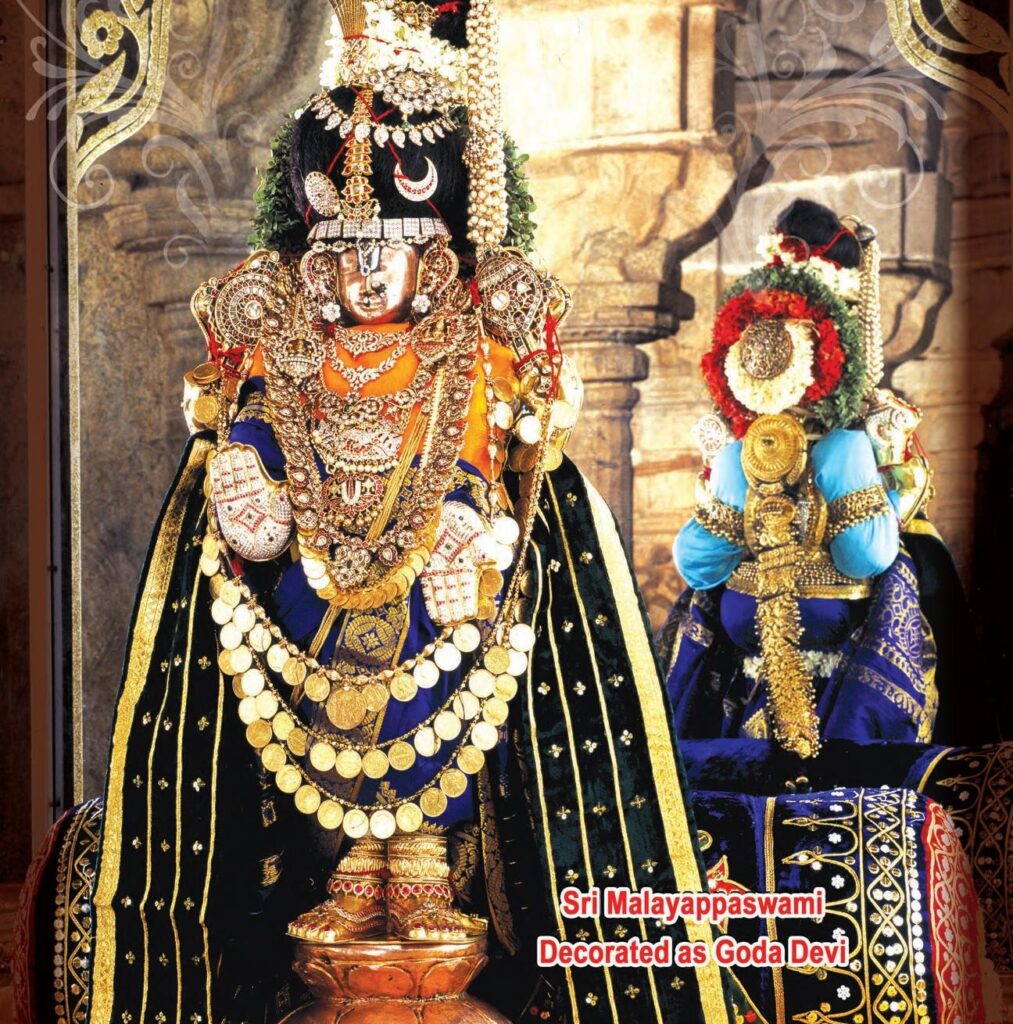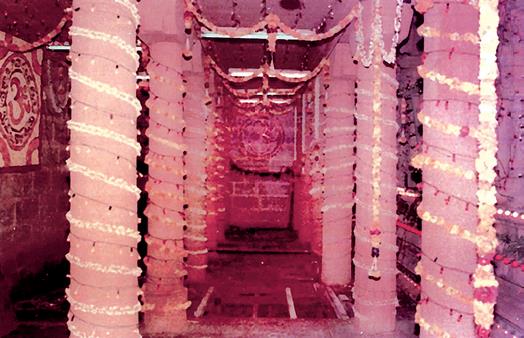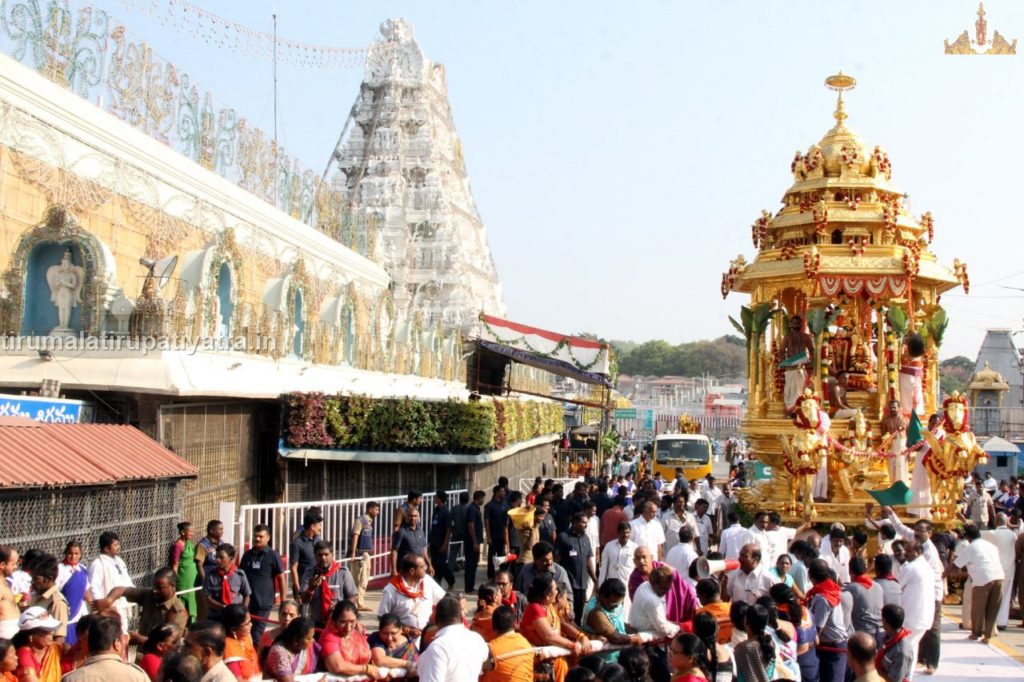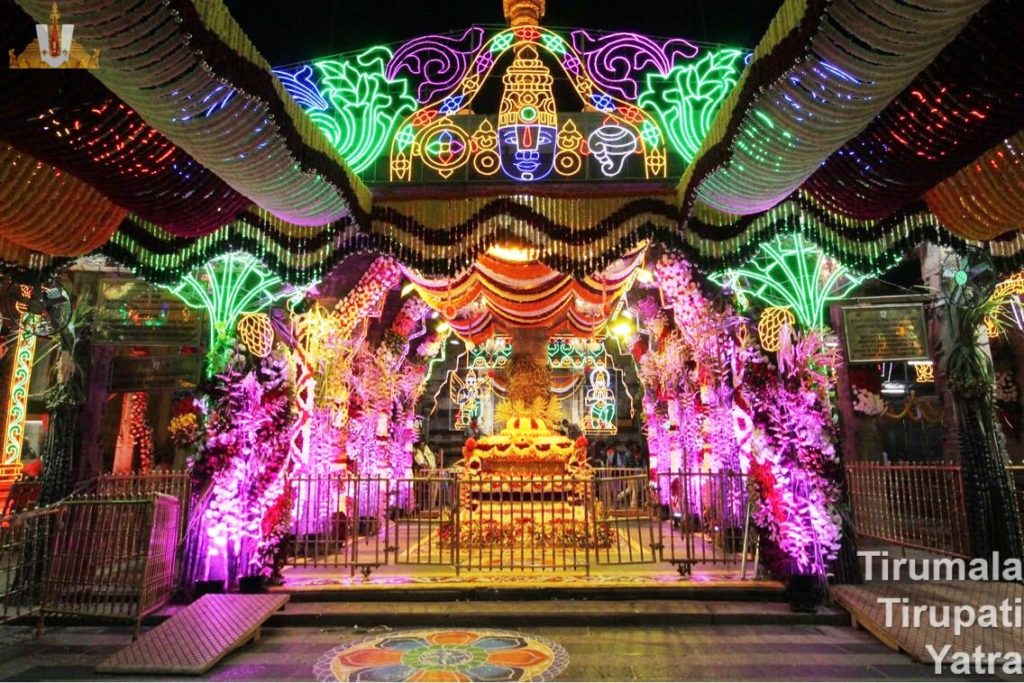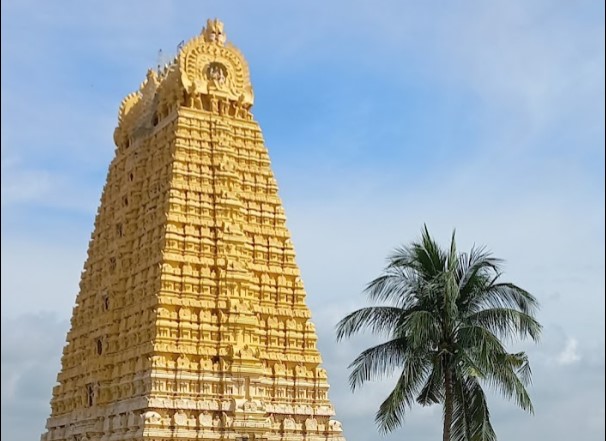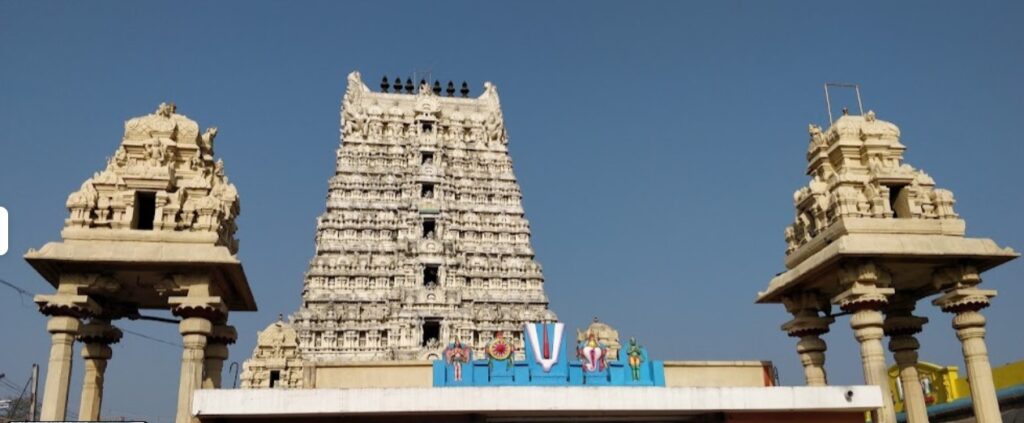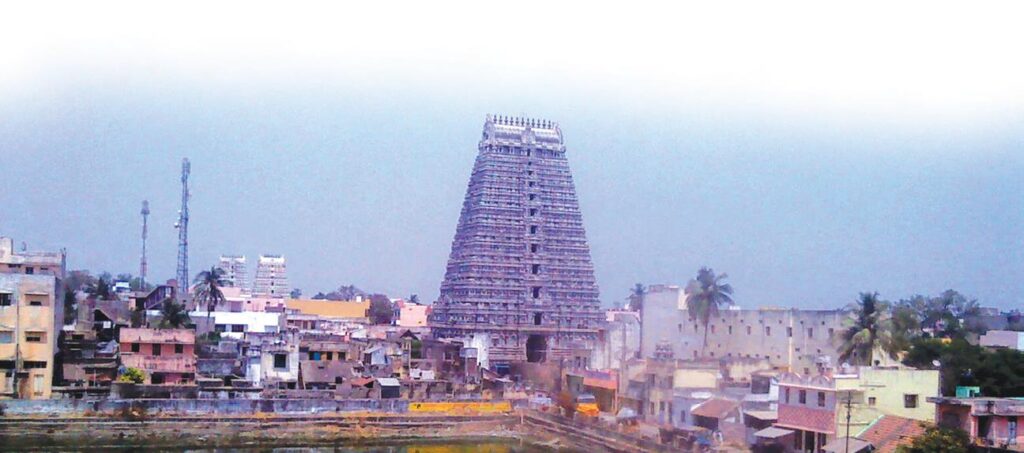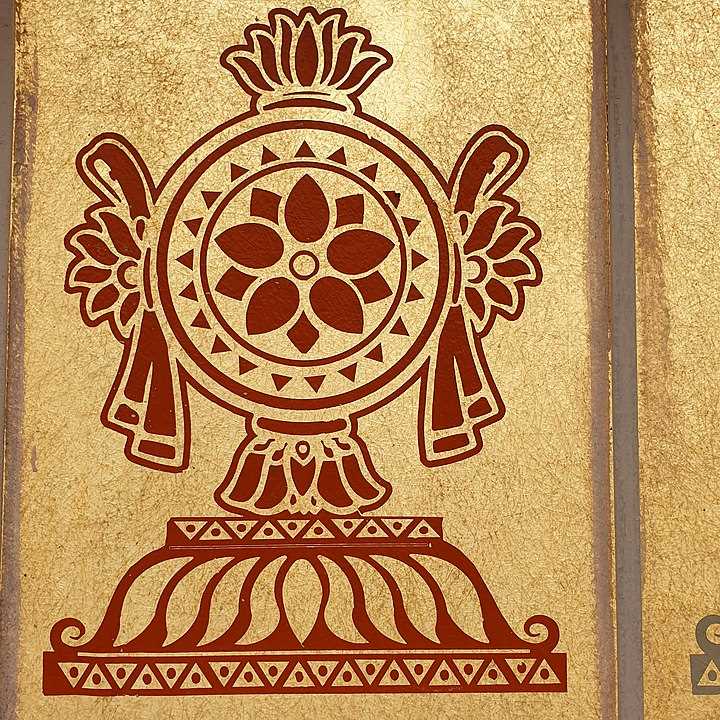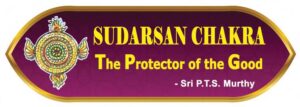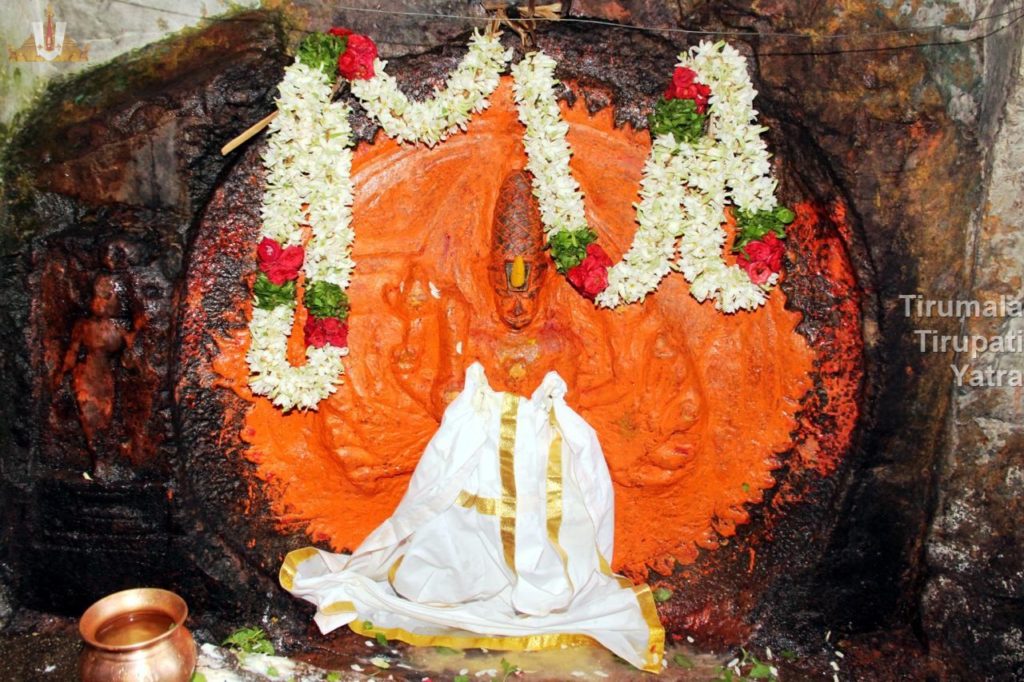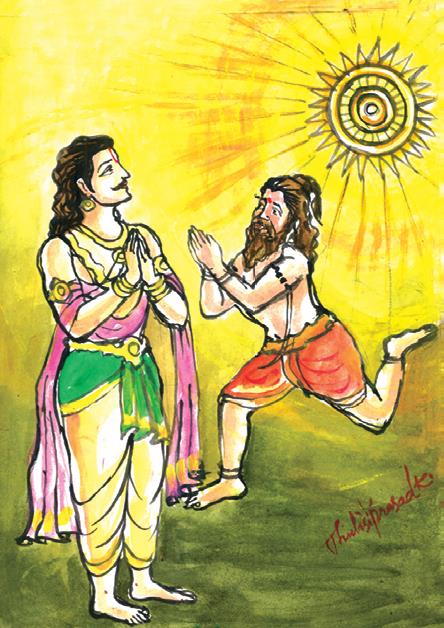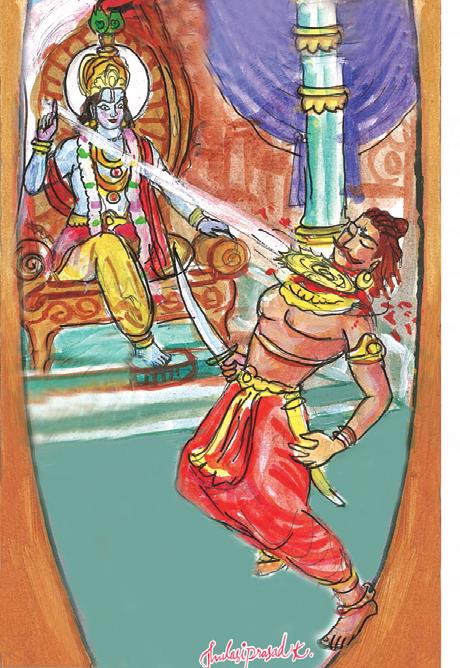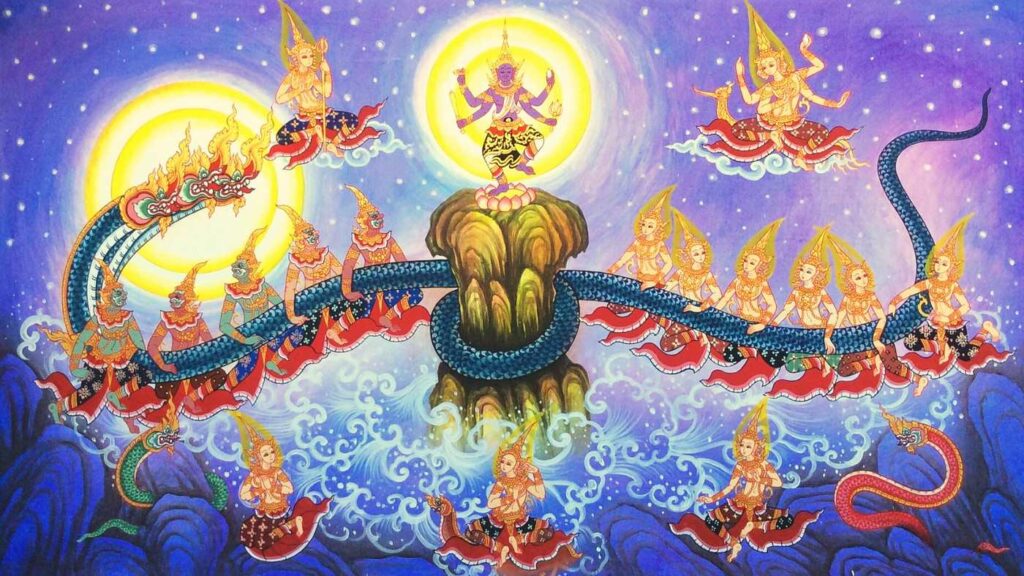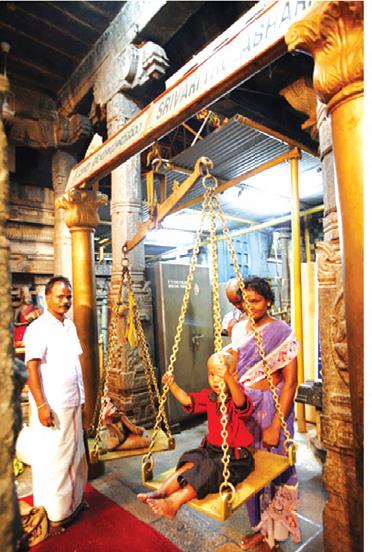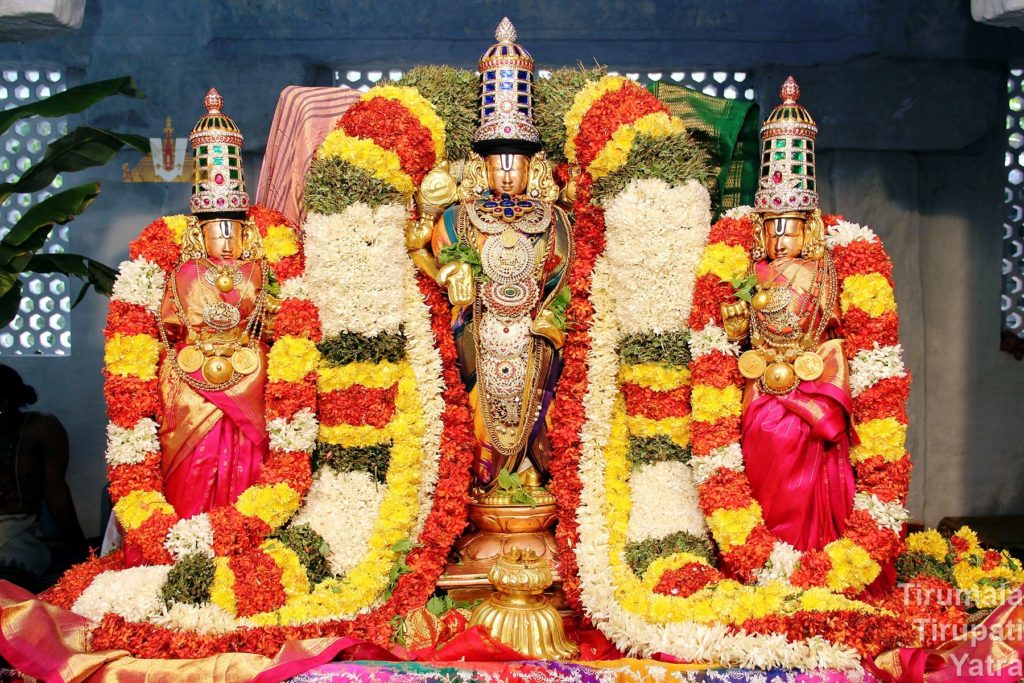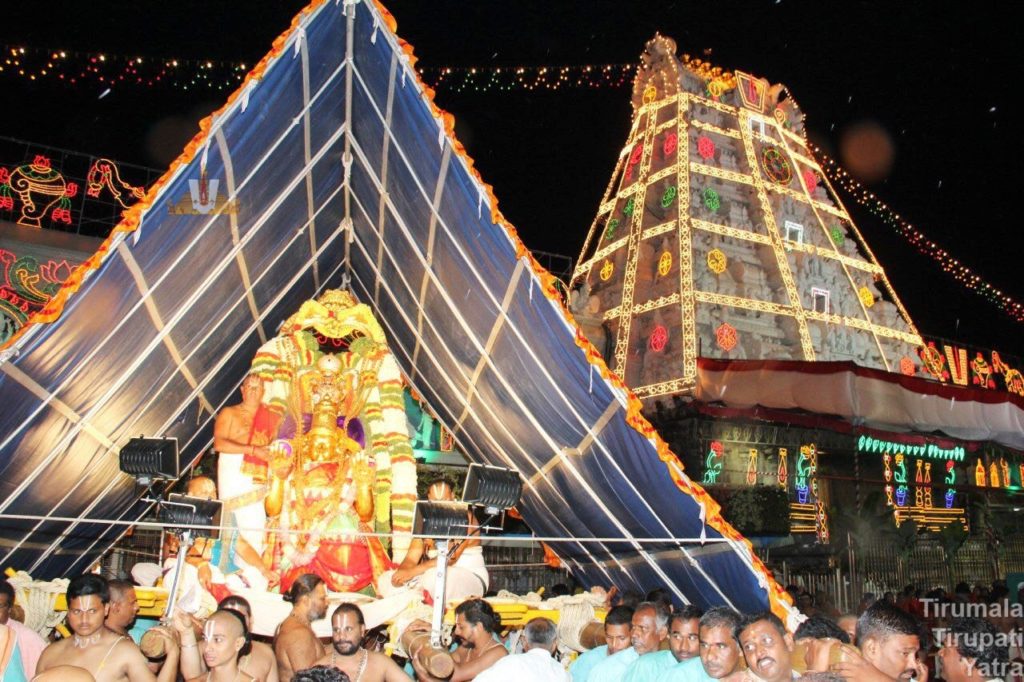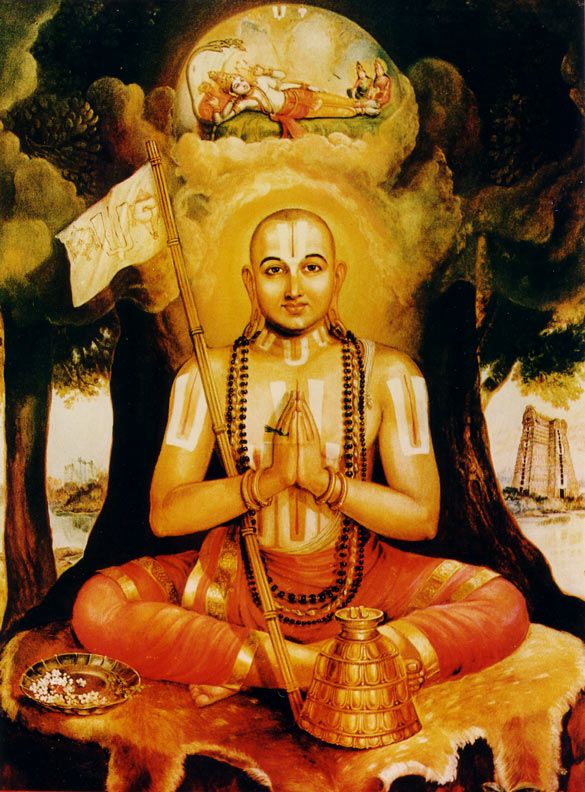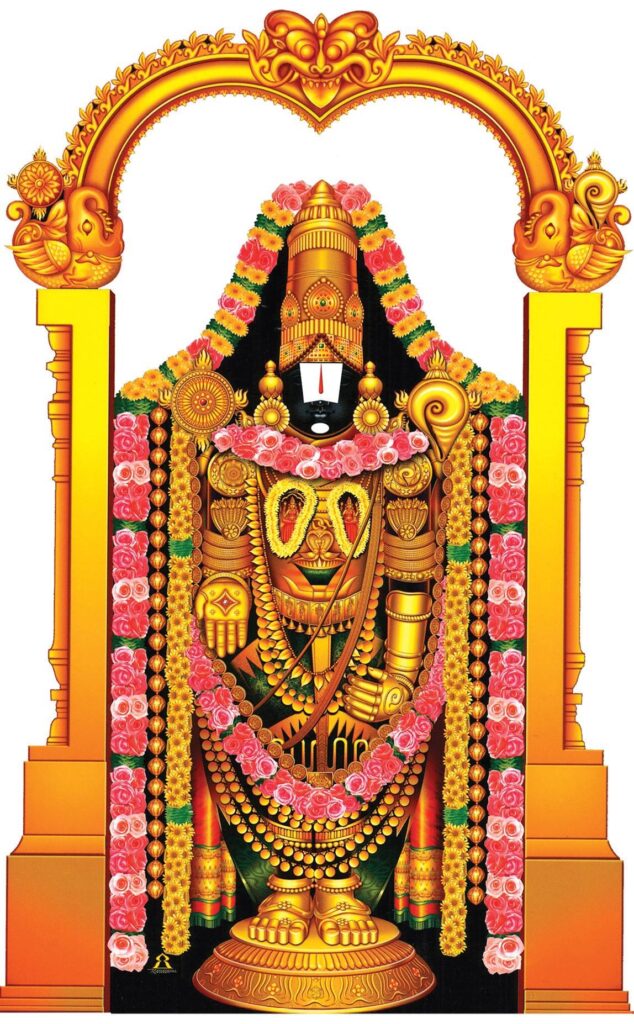Sri Soumyanatha Swamy
Sri Maha Vishnu is sheltered in a beautiful gentle form as Sri Saumyanatha Swami in Nandaluru temple. The deity of the temple is known for his consideration towards the devotees who are in dire necessity of God’s blessings. It is believed that He blesses all his devotees generously.
Location
Nandalur is located on the banks of the Bahuda River on the Kadapa – Tirupati main road, about forty kilometres from Kadapa in the Annamayya district.
Click here for Google Maps Location
In the olden days, this region was ruled by a king namely Niranthara Maharaja. He had a concubine named Nelanda. As per her wish, Maharaja Niranthara built a village and named the village ‘Nelandaluru’ on the banks of the Bahuda. Maharaja gave Nelandaluru to the Brahmins as Agrahaaram.
According to Mackenzie Kaifiyat (he was the first surveyor general of India), Nelandalur later became Nendalur and then Nandalur. Nanda means Lord Vishnu. It is the town where Lord Vishnu appeared as Sri Saumyanadha. His temple in Nandalur has a history of more than a thousand years and is resplendent with magnificent architectural splendour.
Legend
There was an interesting ‘sthalapurana’ about the temple and God. Once upon a time, Lord Vishnu went on a world tour as per Maharishi Narada’s wish and visited different parts of the world. During his visit, Sri Maha Vishnu reached the banks of River Bahuda.
After seeing the beauty of this region Sri Maha Vishnu wanted to settle there with the name of Sri Soumyanatha Swamy with an enchanting appearance. Sthalapurana reveals that it was Narada who asked Lord Vishnu to roam around the earth which was consecrated and puja was performed.
Temple Description
Nandalur Sri Soumyanatha Swamy Temple has exquisite sculptures. The Temple has three entrances and Gopurams. The main entrance faces the East and the other two face the North and the South. The East Rajagopuram is built in five stairs with five ‘kalashas’ at the top.
A three-storied gopuram has also been built on the north gate. A gopuram was also built on the south gate but it got destroyed over time and now only the gate remains.
As soon as one enters the temple from the main gate, one will see the temple in a wide courtyard. Opposite the main temple, there are Dwajastambam, Bali Peetham and Garudamandapam. There is a pushkarini in the north direction of the Dwajastambam on the temple premises.
Sri Veeraanjaneya Swamy appears in the mandapam on the south side of the Dwajastambam. Devotees believe that Sri Veeranjaneya Swamy protects the devotees from all ‘grahapeedas.’
The main temple consists of Ranga mandapam, Mukha mandapam, antaralayam and Garbhalayam. The Ranga mandapam built with pillars along with Pradakshana mandapa. The main temple from Mukha mandapa is on elevated platform. On the way to Mukha mandapam there are Dwarapalakas on both sides.
In the main sanctum sanctorum, we find the Lord Sri Soumyanatha Swamy having four hands with Shanku, Chakra, Gadha and Abhaya Hastam.
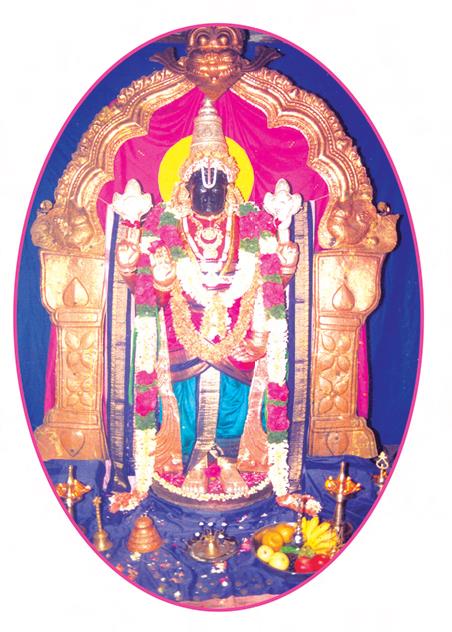
Abhaya mudra
Sri Soumyanatha Swamy is similar to Sri Venkateswara Swamy in Tirumala in His features. The only difference between Sri Venkateswara Swamy and Sri Soumynatha Swamy is that Sri Venkateswara Swamy shows his feet with Varadamudra and Sri Soumyanatha Swamy bears the Abhaya mudra.
Chokkanadha Swamy
Sri Soumyanatha Swamy also known as Chokkanadha Swamy is a beautiful deity. About 6 feet tall Sri Soumyanatha Swamy shines brightly without any lamps from sunrise to sunset when the temple is open. Even though the entire temple is dark, light continues to shine on the Moolavirattu in the sanctum sanctorum.
This light can be seen even on moonlit nights. It is a great feature that the temple is built with light-emitting towers on the Lord at a distance of about 105 feet from the main door. In temple premises, there are small ‘garbhalayas’ for Sri Vishwakshena and Sri Narasimha Swamy.
108 Pradakshinas
Many ‘leelas’ of the Lord are in circulation. It is a deep rooted belief among the devotees that doing nine pradakshnas and standing in front of the Swami in the Pradakshina Mandapam and if wished for any desire it would be fulfilled.
It is a tradition in this temple that the devotees who have fulfilled their wishes should come back to the temple and thank the lord and do 108 pradakshinas. In this way, devotees who make 108 circumambulations to fulfill their wishes can be seen in this temple regularly.
History of the Sri Soumyanatha Swamy Temple
Historical evidence reveals that the temple has a history of more than one thousand years. Inscriptions reveal that the Chola king Kulottunga Chola (1069 – 1122) built this temple in the 11th century and presented 120 acres of land to the Lord.
Inscriptions also reveal that Prataparudra, the ruler of the Kakatiya kingdom who ruled with Orugallu as his capital, built the Galigopuram of the temple and gave five villages to the Lord and made regular offerings with the income coming from these sources.
It seems that Saluva Narasimharaya, who ruled the Vijayanagara Empire before ascending the throne of Vijayanagara during his stay as Dandanatha at Tanguturu near Nandalur and after becoming the emperor of Vijayanagara visited and served this Lord.
Thiruvengalanath’s wife Chennamani, who ruled with Pottapi near Nandalur as her capital, and also Jakkala Thimmasani, offered jewels to the Lord. However, during British rule, the temple began to lose its glory when the grants were stopped.
Sir Thomas Monro, who worked as the Collector of Kadapa and later as the Governor of Madras State during the years 1800-1807, restored the grant system but it was not in operation for a long time. Owing to financial difficulties, the temple lost its former glory. Later it started running with the help of devotees.
The Tirumala Tirupati Devasthanams took the administration of the temple in the year 2022. The emperors, kings, rulers, poets, singers, orators worshipped this Lord. Evidence reveals that the poets who wrote the Mahabharatha in Telugu – Nannaya, Tikkana and Erra pragada visited the Lord.
Sri Thallapaka Annamacharya, who worshipped Tirumala Sri Venkavenkateswara Swamy with more than 32 thousand ‘kirtanas’, visited this Lord and wrote ‘kirtanas.’ Tallapaka, the birthplace of the Annamacharyas of Tallapaka, is six kilometers away from Nandalur.
Annamayya who visited many times wrote on Sri Soumyanatha Swamy as
Choodanannichata jaanadu jokkaanaadhudu
Veedemicche naaku chokkaanaathudu
Chullara Vettu Jetala Chokkanadhu
Pullamlo Neladalur Chokkanadhu
Brahmotsavams
The Brahmotsavams of Sri Soumyanatha Swamy are performed every year in the month of Ashada for ten days besides daily poojas.
During the Brahmotsavams different ‘vahana sevas’ including Radhotsavam and Kalyanotsavam are performed in a grand style. Besides the Brahmotsavams, Vaikunta Ekadasi and Dhanur Masa Pujas will also be performed annually.
Transport and Accommodation Facilities
There are no accommodation facilities for the devotees in Nandaluru. Accommodation is available in private lodges in Rajampet and Kadapa. Nandaluru is located at a distance of 40 km from Kadapa, 10 km from Rajampet and 100 km from Tirupati.
Transport facilities are available from Rajampet, Tirupati, Chittoor, Anantapur, Nellore, Kadapa, Kurnool, Hyderabad, Vijayawada, Srisailam, Bangalore and Chennai. Passenger trains stop at Nandaluru. All trains have stops at Rajampet on the Chennai-Mumbai main railway line.
Final Word
The visit of ‘Nandaluru’ brings out peace and joy to the devotees.
